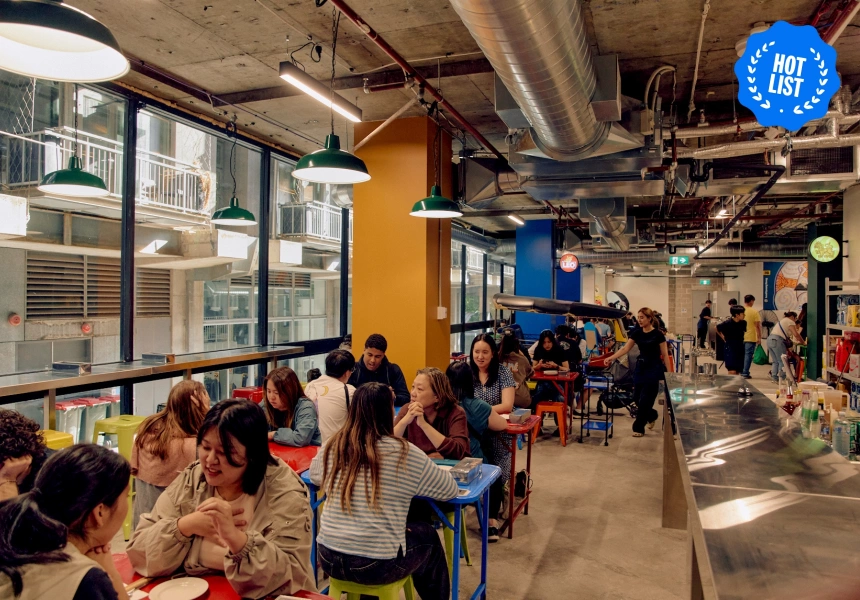Soi 38 is on The Hot List, the definitive guide to Melbourne’s most essential food and drink experiences.
When you’ve wanted something for 10 years and you’re about to get it, a last-minute three-month delay feels like an eternity. Especially if you’ve made the risky decision to move your restaurant out of its long-time home and into a newer, bigger space.
And especially if a big selling point of that new location is the prospect of a larger kitchen with a gas connection. A connection that can speed up service, improve current dishes on the menu, and unlock new ones.
Join Broadsheet Access for exclusive invites to new venue openings in your city, plus other hot–ticket events. Membership starts at just $12 a month for an annual membership.
Join NowGetting away from its reliance on electricity was a major selling point for Soi 38’s big move out of its long-running car-park home.
“If you stir-fry things on electric, it’s just like cooking at home … you don’t get that wok hei,” co-owner Chavalit “Top” Priyaphanee told Broadsheet at the time.
So Priyaphanee and his wife and Soi 38 co-owner Phawinee “Tang” Suwankamnerd were crestfallen by how long it took before they were allowed to turn on the new stovetops.
“We moved to our new home on the second of January, and we didn’t have gas until the fifth of March,” Priyaphanee says. “It’s a lot harder, as a business, to get the application through than it used to be.”
Victoria has the highest gas usage in Australia, and curbing its use and encouraging greater electrification has been a policy priority for the state government in recent years. Victoria’s Gas Substitution Roadmap, which seeks to drastically reduce gas consumption by 2027, is making it progressively more difficult – and expensive – for people to access and use gas.
“For us, for the food we cook, we can’t sustain on electricity alone,” Priyaphanee says. “We did it for 10 years, it just doesn’t work.”
The Soi 38 team had to make do with a flotilla of domestic appliances – an electric hob here, a salamander and a plug-in deep fryer there – while they waited for their approvals to come through.
When they got the go-ahead in March, it transformed Soi 38 right away. The existing menu levelled up instantly. Before, to get his woks hot enough for the fragrant char of wok hei to assert itself onto the food, Priyaphanee was basically using a camp stove. Now, the formerly dormant stovetops are doing what they were hired to do.
“When you stir-fry, you need all the sauce and seasoning to be absorbed into the meat, so we need that high heat to push it in,” Priyaphanee says. “Now we can add more stir fries to the menu, and start doing more Isaan food [from north-east Thailand], too.”
In June, after a couple of months’ tinkering, Soi 38 launched the first of those new stir-fries: pad krapow, one of Thailand’s signature street foods. And people have taken to the new addition with gusto – last month, Soi 38 sold over 1500 portions of the $18 lunchtime exclusive.
It took six months – and 10 years before that – for one of Melbourne’s best Thai restaurants to be able to make the food it wanted to make. With the gas connection in place, Soi 38 can finally step out of the shadow cast by the car park, and start its new chapter properly.
“We were so, so, limited with what we could do with the resources we had,” says Priyaphanee. “Now we can serve more people better food, more quickly.”
The Hot List is proudly sponsored by Square.

